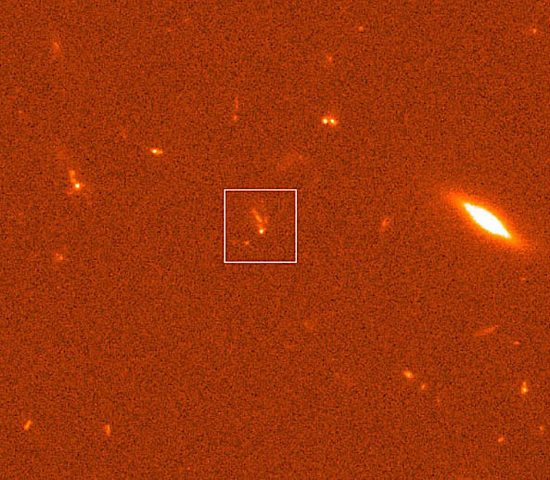
Mar 27, 2019
What ionizes the intergalactic medium?
According to a recent press release, astrophysicists are puzzled by the extent of ionization in distant regions of the Universe.
As the announcement states, after the newborn Universe cooled, hydrogen nuclei (protons) recombined with electrons into neutral atoms. Then, extreme ultraviolet light frequencies are thought to be how the gas was “re-ionized”. However, what is not understood is how that light enters the IGM.
In an Electric Universe, galactic evolution occurs because large-scale plasma discharges form coherent filaments that exhibit electrodynamic behavior. Since the Universe is an electrical system that is constantly charging and discharging, instead of a gravitational system that is constantly contracting and expanding, gravity is not the primary energy source for galactic consolidation. Gravity, by itself, cannot explain how galaxies sometimes form long arcs, like silver beads on a string, threaded through the Universe.
Conventional theories rely on gravity and acceleration for radiation to be produced in space: compressing hydrogen gas and dust is supposed to generate temperatures in the millions of Kelvin, causing gas and dust to glow brightly and emit radiation, including ultraviolet and X-rays: both powerful ionization sources.
Astronomers cannot measure the properties of extragalactic space, directly, so they develop mathematical models based on the behavior of neutral gases. They believe that plasma is merely ionized gas, so it only behaves according to the physical laws applicable to neutral gas (with slight modifications for electromagnetic effects).
However, electric charge surges out along galactic cluster spin axes, forming double layers that can be seen as radio “haloes” of various sizes and power output. Electric charge spreads out around a galaxy’s circumference, flowing back to the core along Birkeland current filaments. Since the elements in a circuit radiate energy, that energetic radiance shows that they are powered by larger circuits. The extent of the larger circuits may be traced by the polarized radio emissions coming from them.
Intense electromagnetic fields associated with Birkeland currents create umbrella-like lobes, or haloes, on the margins of galaxies and galaxy clusters. Those fields cause electrons to accelerate with velocities close to light speed. Excited electrons emit synchrotron radiation, the principle source for radiation in space.
Electromagnetic theories state that an electric field arises, along with a flow of electric charge, whenever plasma ionizes a cloud of dust and gas. Electricity moving through any substance forms magnetic fields that align and constrict the flow. Birkeland currents are visible at the largest conventional scales.
Galaxies present many enigmas. Since kinetic energy, alone, is available in astronomical theories—gravity representing only one facet of that force—high temperatures in galaxies “must be” due to gravity-driven collisions in the past.
Plasma’s behavior is governed by electric circuits. Double layers with large voltages between them often exist. The electric forces in double layers are incomparably stronger than gravity, broadcasting radio waves over a wide range of frequencies. Most significant to the bulletin, they can accelerate charged particles to extreme energies. The Universe is driven by electric circuits at ever larger scales, so electrons and other ions, accelerated through intense electric fields, radiate in many bandwidths, providing sufficient energy for ionization to exist.
Stephen Smith












